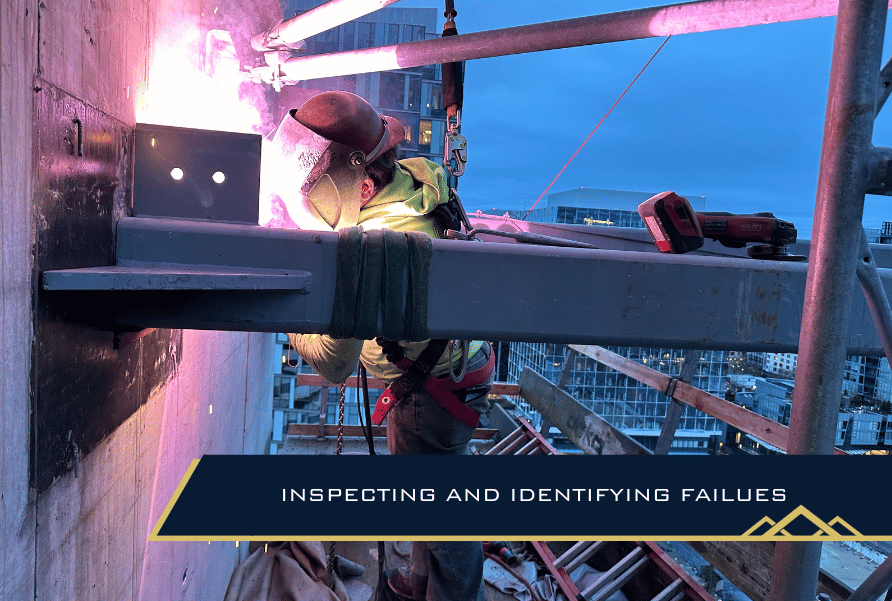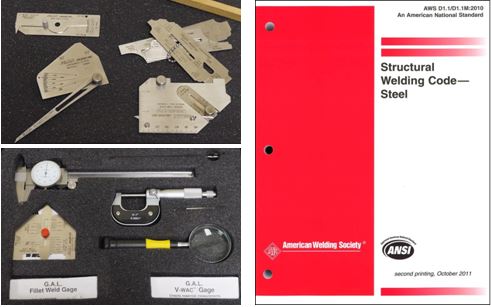Professional Welding Inspection Services in Gilbert Arizona: What You Need to Know
Professional Welding Inspection Services in Gilbert Arizona: What You Need to Know
Blog Article
Discovering the Relevance of Welding Inspection in Industrial Applications: Protecting Versus Failures and Enhancing Durability
Welding evaluation acts as a crucial line of protection in industrial applications, ensuring the structural honesty and dependability of bonded components. By systematically identifying defects such as porosity and insufficient blend, examinations not just avoid failures however likewise prolong the life expectancy of crucial assets. Sticking to industry criteria enhances both security and functional performance; nonetheless, the implications of disregarding these methods can be severe. As we check out the multifaceted advantages of regular inspections, it ends up being apparent that recognizing these dynamics is not merely a matter of conformity yet a strategic vital for longevity and danger reduction (Welding Inspection Gilbert Arizona).
Duty of Welding Inspection
Welding examination works as an important protect in commercial applications, guaranteeing that welded structures meet defined standards of top quality and security. This process includes a systematic exam of welds to validate their stability, toughness, and conformity with well established codes and specifications. The function of welding examination is multifaceted, incorporating both aesthetic evaluations and non-destructive testing techniques, which may consist of ultrasonic, radiographic, or magnetic bit testing.

Furthermore, welding evaluation plays a vital role in regulatory conformity. Many industries are controlled by strict security requirements, necessitating comprehensive documents and validation of welding methods. By keeping these documents, companies can demonstrate adherence to safety and security guidelines, therefore cultivating count on amongst customers and stakeholders. Eventually, the role of welding evaluation is crucial in promoting safety, improving performance, and safeguarding financial investments in commercial framework.
Typical Welding Flaws

Among one of the most common flaws is porosity, defined by tiny gas pockets trapped within the weld metal. This takes place as a result of contaminants or incorrect securing gas, jeopardizing the weld's toughness. Another considerable issue is insufficient combination, where the weld metal falls short to bond effectively with the base product, potentially resulting in architectural weak points.
Splits can additionally establish during or after the welding process, typically attributed to thermal tensions or inappropriate cooling rates. In addition, damaging, where the base metal is deteriorated along the weld grain, can damage the joint and is typically triggered by excessive warm input or inaccurate strategy.
Moreover, lack of infiltration takes place when the weld steel does not get to the origin of the joint, resulting in poor stamina. Comprehending these usual problems is critical for welders and inspectors alike to ensure that bonded frameworks meet security and efficiency requirements, inevitably stopping prospective failures in industrial applications.
Benefits of Routine Inspections
Routine inspections serve as an essential secure in making sure the reliability and long life of bonded structures. These analyses determine prospective defects and weaknesses that may endanger the honesty of welds, permitting prompt removal prior to problems intensify. By carrying out a structured inspection regimen, companies can dramatically minimize the danger of devastating failures that may cause my company costly downtime, equipment replacement, or perhaps crashes.
Moreover, routine examinations add to boosted quality assurance throughout the welding procedure. By sticking to a constant examination timetable, firms can make certain that their welding methods fulfill well established high quality benchmarks and ideal techniques. This not just promotes a culture of liability but likewise motivates continuous improvement amongst welding personnel.
Furthermore, regular assessments facilitate far better upkeep planning. By recognizing wear and tear early, organizations can strategically arrange replacements and repair services, lessening disturbance to operations. This positive strategy eventually brings about prolonged possession lifespan and boosted general productivity.
Lastly, a commitment to routine inspections can improve a business's online reputation in the industry. Customers and stakeholders progressively worth companies that prioritize security and quality, thereby improving trust fund and potentially bring about increased service opportunities.
Industry Requirements and Rules
Sticking to market requirements and policies is a basic facet of welding examination that enhances the benefits of regular assessments. These requirements, established by organizations such as the American Welding Culture (AWS) and the American Culture of Mechanical Designers (ASME), provide a structure for finest techniques in welding procedures, materials, and examination methods. Conformity with these laws guarantees that welds satisfy the needed quality and safety and security criteria, considerably decreasing the risk of architectural failings.
Governing bodies like the Occupational Security and Wellness Administration (OSHA) better implement guidelines that secure workers and the environment during welding procedures. By adhering to these developed standards, sectors can enhance the integrity of their frameworks and parts, ensuring they execute as intended under various functional problems.
In addition, adherence to industry criteria fosters uniformity in high quality control, facilitating smoother interaction amongst stakeholders and regulatory companies. This positioning not just lessens responsibility dangers but likewise boosts the credibility of companies in open markets. Eventually, conformity with welding criteria and policies is not merely a legal commitment; it is an important financial investment in safety and security, efficiency, and long-term functional success.
Future Trends in Welding Inspection
As sectors continue visit to evolve, the future of welding inspection is poised to integrate advanced modern technologies that boost precision and efficiency. Among one of the most significant trends is the adoption of automation and robotics in evaluation processes. Automated systems can carry out evaluations rapidly, minimizing human error and boosting throughput in producing environments.
Additionally, the integration of expert system (AI) and artificial intelligence algorithms will make it possible for predictive analytics, permitting for real-time analyses and aggressive upkeep (Welding Inspection Gilbert Arizona). By assessing information from previous evaluations, these innovations can identify patterns that could suggest possible failings, thereby extending the life-span of welded elements

Moreover, the pattern towards digitalization will certainly lead to improved data management systems that help with far better tracking, reporting, and compliance with sector requirements. In recap, the future of welding inspection is characterized by technical innovations that promise to significantly improve reliability, security, and functional effectiveness in numerous industrial applications.
Verdict
In verdict, welding examination offers an important function in ensuring the integrity and toughness of welded frameworks throughout numerous industrial applications. As developments in innovation continue to evolve, the future of welding assessment promises enhanced accuracy and performance, eventually contributing to the durability of critical frameworks.
Welding assessment offers as a critical line of protection in commercial applications, making certain the architectural honesty and integrity of bonded components.Welding inspection offers as a crucial guard in industrial applications, making sure that bonded structures satisfy specified requirements of top quality and safety - Welding Inspection Gilbert Arizona. Ultimately, the role of welding evaluation is crucial in promoting safety and security, enhancing performance, and protecting investments in commercial framework
These criteria, established by organizations such click here to find out more as the American Welding Society (AWS) and the American Culture of Mechanical Engineers (ASME), give a structure for finest techniques in welding processes, products, and inspection methods.In conclusion, welding evaluation offers a crucial function in making sure the stability and longevity of bonded frameworks across numerous commercial applications.
Report this page